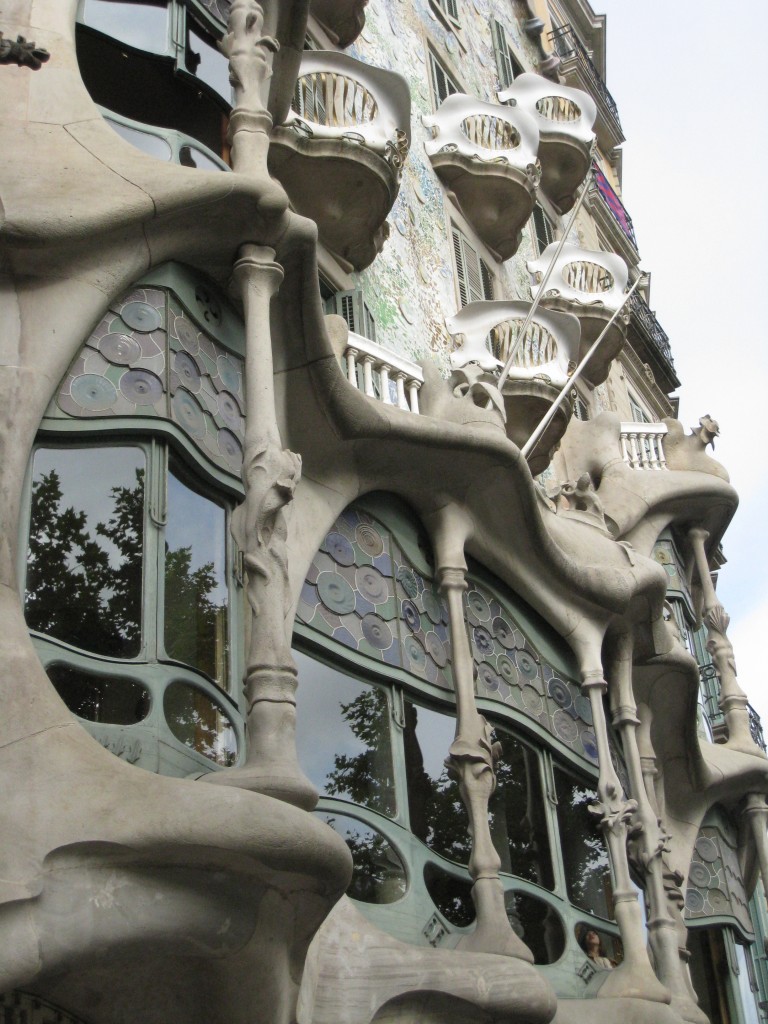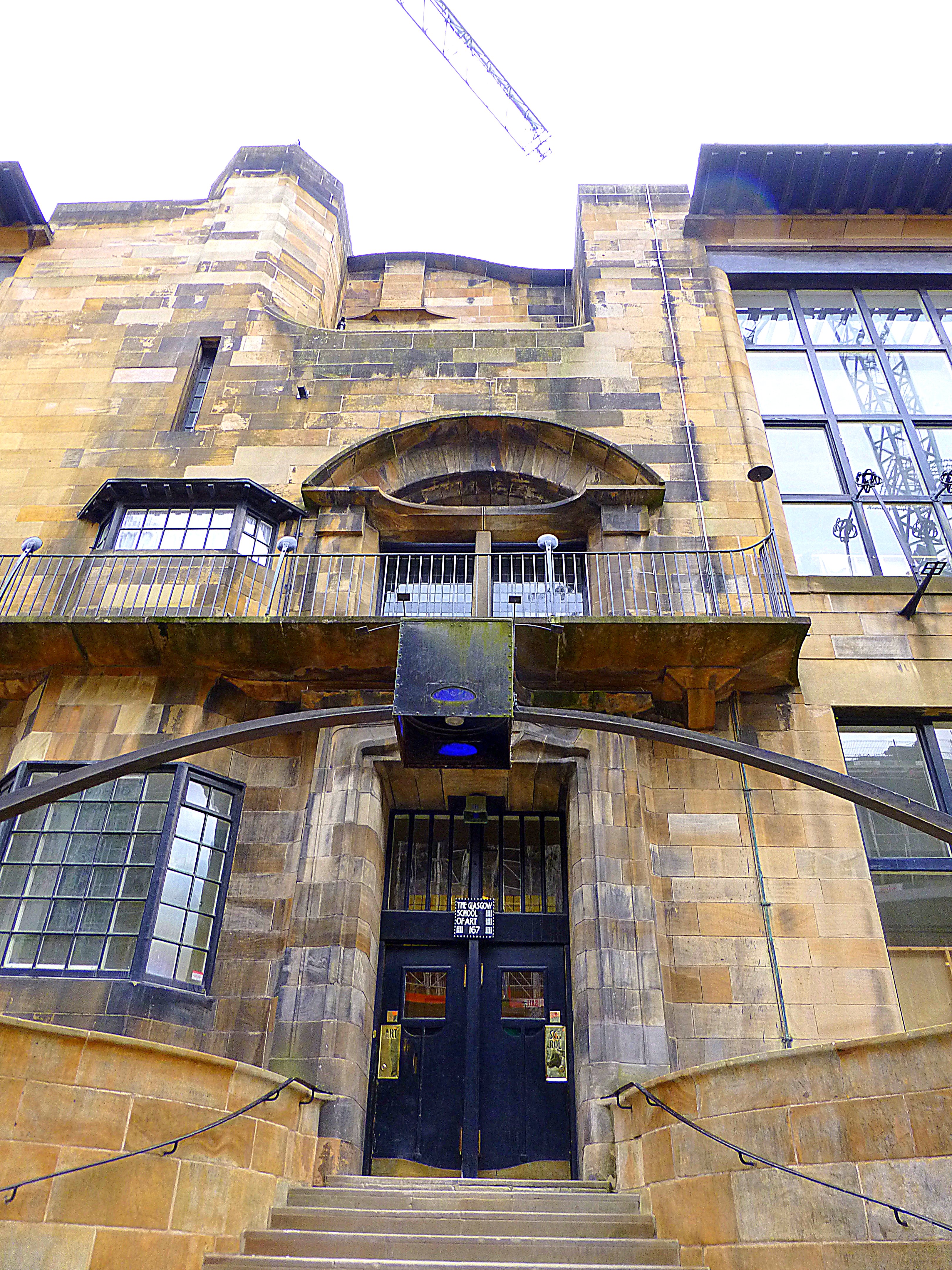By: Jesi Tassava
Art Nouveau was a style of architecture that began in 1892 and is also known as the style of the Turn of the Century. “It remained almost exclusively a style of decoration.” (Pevsner, 1943) It broke away from using historical styles of architecture into using completely new ideas, especially those ideas that were brought about during the Industrial Revolution. Nature became a big aspect and influenced the architects of the time. Arches, curvature, and moldings are very common features for windows and doors.
One of Antoni Gaudi’s masterpieces is the Casa Batlló in Barcelona Spain. His version was built between 1904 and 1906 after replacing the original facade with stone and glass and made the outside of the building look wavy. “At the top of the facade, the roof is in the shape of an animals back with large iridescent scales” (“Casa Batlló, n.d.). The structure is full of organic elements and references to nature and wildlife, greatly reflecting the Art Nouveau Movement.

Casa Batillo
by jspees, used under 
The Glasgow School of Art was built by Charles Rennie Mackintosh in 1899 in his original style with many Art Nouveau feature. The different shades of grey and lilac on the exterior of the building are very representative of this architectural time period. The different colors along with “a straight, erect and resilient, uncompromisingly angular framwork” (Pevsner, 1943), make Mackintosh’s work a prime example of the Art Nouveau architectural style.

Glasgow School of Art
by Dave and Margie Hill/Kleerup, used under 
Sources:
Pevsner, N. (1943). An Outline of European Architecture. Baltimore, Mryland: Penguin Books Inc.
Casa Batllo. (n.d.). Retrieved 4 10, 2014, from Casa Batllo: Gaudi Barcelona: http://www.casabatllo.es/en/history/casa-batllo/